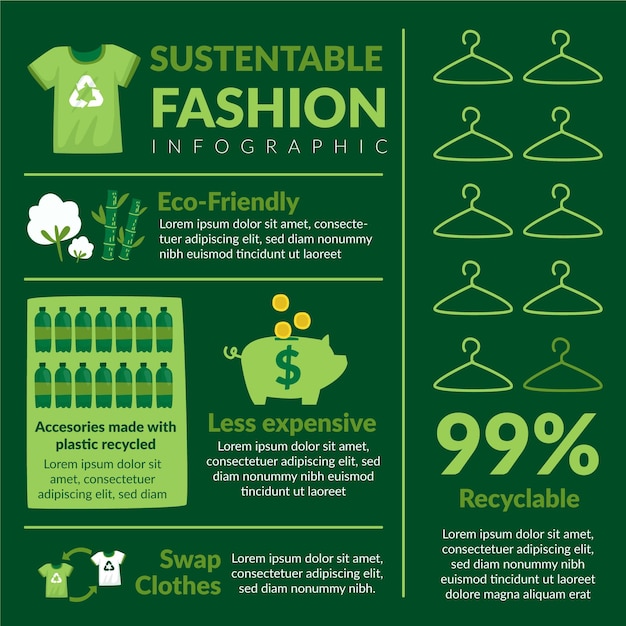Keep Ahead of the Contour by Exploring Innovative Fashion Patterns
In a market as dynamic as style, remaining in advance entails even more than simply complying with current fads-- it demands an expedition of development. The merging of technology and style heralds a new age of customer involvement.

Accepting Smart Textiles
Over the last few years, the fashion business has experienced a transformative shift with the combination of smart textiles, an innovative development that blends modern technology with textile. This evolution stands for not just a combination of aesthetic appeals and capability but likewise a significant jump in the direction of sustainability and personalization in vogue. Smart fabrics, also known as e-textiles, embed advanced electronic devices such as sensing units and conductive threads within the fabric, allowing garments to connect with the environment or the wearer.
These textiles are developed to check physiological specifications, such as heart rate or body temperature level, offering real-time health analytics. Past health and wellness applications, smart textiles are likewise being utilized for flexible clothing, which can alter color or pattern in feedback to environmental stimulations, hence supplying a dynamic fashion experience.
Additionally, the advancement of energy-harvesting textiles that generate power from motion or sunlight is leading the means for self-dependent wearable technology. This technology is interesting environmentally conscious consumers and designers aiming to lower the ecological impact of style. As r & d in this field advance, wise fabrics are anticipated to come to be increasingly widespread, reshaping the landscape of modern-day style with their multifunctional capacities.
The Increase of 3D Printing
Reinventing the production landscape, 3D printing has become a game-changer in the fashion business. This cutting-edge innovation has made it possible for designers to press the limits of creative thinking, creating elaborate and personalized garments that were previously unbelievable. By leveraging electronic style and additive manufacturing, 3D printing facilitates the production of complex geometries and patterns, permitting designers to explore new textures and frameworks.
A noteworthy advantage of 3D printing in vogue is its capability to generate on-demand, minimizing waste and reducing inventory needs. This performance not only optimizes production processes but additionally allows for rapid prototyping, allowing designers to bring their visions to life in a much shorter timeframe. Moreover, 3D printing supports personalization to a degree unparalleled by conventional methods, using one-of-a-kind layouts and customized fits customized to individual customer preferences.
The surge of 3D printing has likewise equalized fashion, making it obtainable to arising designers that can currently make top quality items without substantial financial investment in typical manufacturing infrastructure. As technology remains to breakthrough, the fashion sector is poised to harness the complete capacity of 3D printing, exploring brand-new materials and strategies that will undoubtedly redefine just how style is conceived and created.
Lasting Style Innovations
As the fashion business grapples with journalism need for ecological obligation, lasting fashion innovations have actually emerged at the leading edge of transformative modification. The expanding recognition of eco-friendly effect has sustained a shift towards even more eco-conscious techniques and products. Brands and designers are currently focusing on sustainability, integrating methods that decrease waste and reduce carbon footprints.
One significant advancement is the rise of round style, which stresses recycling and upcycling to expand the lifecycle of garments. This approach not just minimizes waste however likewise urges consumers to useful site take on an extra mindful approach to apparel intake.
Another advancement depends on the fostering of innovative dyeing strategies that make use of all-natural dyes or waterless procedures, thereby reducing the substantial quantities of water and chemicals typically made use of in fabric dyeing. Additionally, developments in biotechnology have actually led to the production of lab-grown leather and materials, using environmentally friendly and cruelty-free choices to standard products. Via these pioneering efforts, the garment industry is making meaningful strides towards an extra lasting future.

Tech-Integrated Garments
Tech-integrated clothing represents a cutting-edge combination of fashion and technology, improving just how individuals interact with their apparel. This ingenious domain is noted by the incorporation of wise textiles and ingrained digital parts, improving both functionality and visual appeal. From fitness trackers embedded in sports apparel to warmed jackets regulated using smart device applications, tech-integrated apparel offers customers unmatched ease and adaptability.
Introducing brands are driving this pattern, concentrating on producing garments that reply to environmental stimuli or user commands. As an example, some garments can transform shade or pattern in action to temperature shifts, while others incorporate biometric sensing units to check wellness metrics like heart rate or anxiety degrees. The seamless integration of technology right into fabrics likewise extends to ecological sustainability, with initiatives to create self-cleaning fabrics or garments that get used to climate condition, therefore reducing the need for numerous layers.
Additionally, the development of wearable technology is not simply restricted to clothes but expands to devices like watches and eyewear, more expanding the scope of tech-integrated style. As the industry remains to innovate, the potential for modification and personalization in garments grows, offering customers distinct, tech-enhanced style experiences that satisfy their individual requirements and preferences.
Future of Virtual Style
In recent times, the future of online fashion has actually become a transformative force within the sector, leveraging improvements in digital look at more info innovation to redefine how style is developed, experienced, and taken in. By incorporating augmented fact (AR), virtual truth (VR), and 3D style devices, designers can now craft interactive and immersive experiences that transcend typical fashion limits. Online style permits the development of garments that exist solely in digital settings, providing limitless opportunities for development without the limitations of physical manufacturing.
This electronic shift not only provides possibilities for creative expression however additionally addresses sustainability problems fundamental in standard style techniques. Cape Town Sustainable Fashion. By eliminating the demand for physical resources, virtual fashion reduces waste and reduces carbon impacts. In addition, the surge of virtual fashion aligns with the enhancing customer need for individualized and special experiences, as digital garments can be tailored and customized to individual preferences easily

Verdict
The fashion sector's future lies in the integration of click to investigate ingenious innovations and lasting practices. Digital style is positioned to redefine consumer communications.
In current years, the fashion market has witnessed a transformative change with the assimilation of clever fabrics, a sophisticated development that blends innovation with material.As the fashion market grapples with the pushing requirement for ecological obligation, lasting style technologies have arised at the center of transformative adjustment.In current years, the future of digital style has actually arised as a transformative pressure within the market, leveraging improvements in electronic innovation to redefine exactly how fashion is created, experienced, and consumed. The rise of virtual style straightens with the raising customer need for individualized and special experiences, as online garments can be customized and tailored to specific choices with ease.
The style market's future lies in the combination of sustainable practices and ingenious innovations.